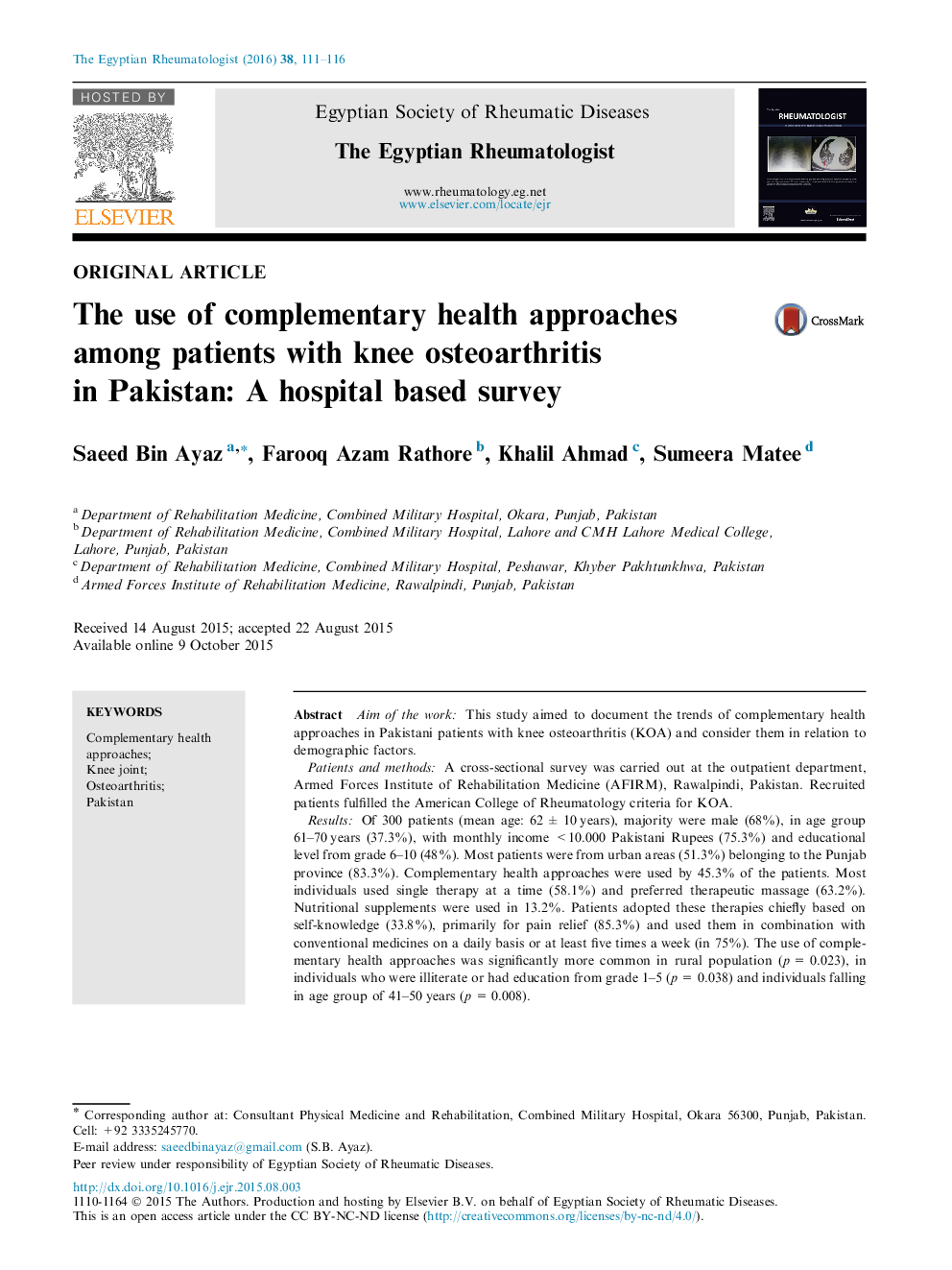| Article ID | Journal | Published Year | Pages | File Type |
|---|---|---|---|---|
| 3348885 | The Egyptian Rheumatologist | 2016 | 6 Pages |
Aim of the workThis study aimed to document the trends of complementary health approaches in Pakistani patients with knee osteoarthritis (KOA) and consider them in relation to demographic factors.Patients and methodsA cross-sectional survey was carried out at the outpatient department, Armed Forces Institute of Rehabilitation Medicine (AFIRM), Rawalpindi, Pakistan. Recruited patients fulfilled the American College of Rheumatology criteria for KOA.ResultsOf 300 patients (mean age: 62 ± 10 years), majority were male (68%), in age group 61–70 years (37.3%), with monthly income <10.000 Pakistani Rupees (75.3%) and educational level from grade 6–10 (48%). Most patients were from urban areas (51.3%) belonging to the Punjab province (83.3%). Complementary health approaches were used by 45.3% of the patients. Most individuals used single therapy at a time (58.1%) and preferred therapeutic massage (63.2%). Nutritional supplements were used in 13.2%. Patients adopted these therapies chiefly based on self-knowledge (33.8%), primarily for pain relief (85.3%) and used them in combination with conventional medicines on a daily basis or at least five times a week (in 75%). The use of complementary health approaches was significantly more common in rural population (p = 0.023), in individuals who were illiterate or had education from grade 1–5 (p = 0.038) and individuals falling in age group of 41–50 years (p = 0.008).ConclusionsThe use of complementary health approaches is common in Pakistani KOA patients who are primarily rural-based, young and less educated. Massage is the preferred complementary health approach and most patients practice a single approach at a time in combination with conventional medicines.
